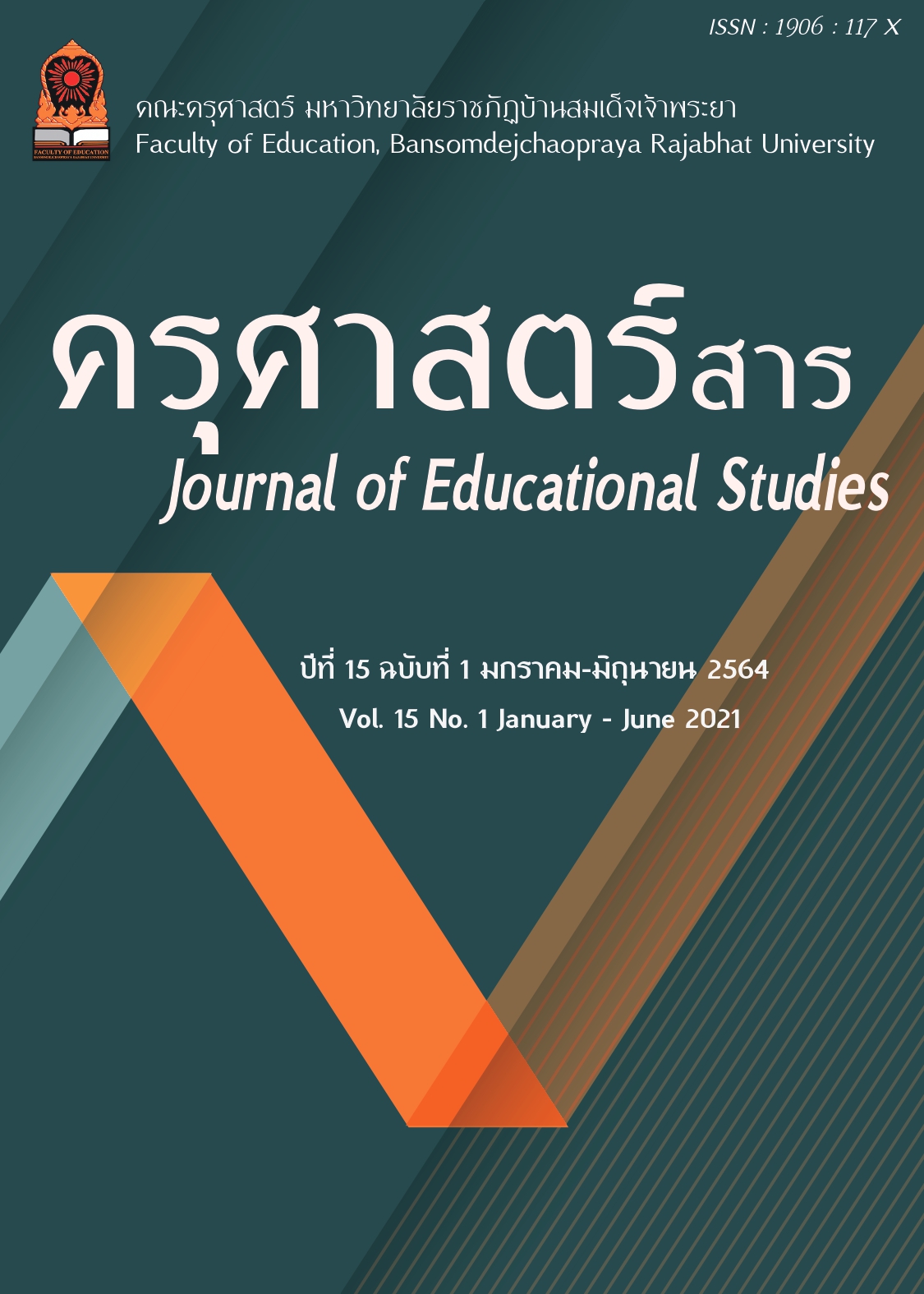วารสาร
ลักษณะของบุคคลที่มีความคิดสร้างสรรค์
ปัญจนาฏ วรวัฒนชัย
มหาวิทยาลัยราชภัฏบ้านสมเด็จเจ้าพระยา
บทคัดย่อ
มนุษย์ทุกคนมีโอกาสที่จะคิดและสร้างสิ่งมหัศจรรย์ต่างๆ ให้เกิดขึ้นในโลกใบนี้ได้ หากบุคคลใดเป็นเช่นนั้นย่อมถือได้ว่าบุคคลนั้นมีความคิดสร้างสรรค์ มีความโดดเด่นเฉพาะบุคคลที่ไม่เหมือนใคร แต่ลองคิดในอีกมุมหนึ่งว่าหากมนุษย์ในโลกนี้ทุกคนคิดเหมือนกัน ทำอะไรทุกอย่างเหมือนกันโลกก็คงไร้ซึ่งจินตนาการและความคิดสร้างสรรค์ ความเป็นอยู่ของมนุษย์คงจะไม่เจริญและสะดวกสบายเช่นนี้ ทุกวันนี้โลกเรามีวิวัฒนาการรุดหน้าอย่างไม่หยุดยั้งเพราะโลกนี้มีบุคคลที่มีความคิดสร้างสรรค์ทำคุณประโยชน์แก่มวลมนุษย์อย่างมหาศาลอยู่ตลอด การได้เข้าใจลักษณะของบุคคลที่มีความคิดสร้างสรรค์ จะช่วยให้สนับสนุนบุคคลในครอบครัว หรือในสังคมได้มีการพัฒนาส่งเสริมฝึกฝนปลูกฝังความคิดสร้างสรรค์ให้เกิดขึ้นได้ในทุกระดับอายุเพื่อเป็นประชากรที่มีศักยภาพในการพัฒนาประเทศต่อไป
Abstract
Everyone has an opportunity to think and create wonderful things in the world. If someone is like that, then that person can be considered creative thinking and unique. On the other hand, if everyone in the world thought or did the same thing, the world would devoid of imagination and creativity. Human well-being would not be as prosperous and comfortable as this. Nowadays our world is constantly evolving because it is always inhabited by creative people who have made enormous benefits to human beings. Understand the characteristics of a creative person will help support people in families, or societies in developing, promoting, and cultivating creativity at all age levels among themselves to become the citizens with full potential for the further development of the country.
คำสำคัญ
ลักษณะของบุคคลที่มีความคิดสร้างสรรค์
Keywords
characteristics of a creative person
เอกสารอ้างอิง
สิทธิชัย ลายเสมา. (2557). ระบบการเรียนรู้ร่วมกันด้วยทีมเสมือนจริงในสภาพแวดล้อมการเรียน แบบภควันต ภาพโดยใช้กระบวนการแก้ปัญหาเชิงสร้างสรรค์เพื่อพัฒนาความคิด สร้างสรรค์และทักษะการทำงาน ร่วมกัน.วิทยานิพนธ์ปริญญาดุษฎีบัณฑิต สาขาวิชาเทคโนโลยีสารสนเทศและการสื่อสารเพื่อการศึกษา มหาวิทยาลัยเทคโนโลยีพระจอมเกล้า พระนครเหนือ.
Cannatella, H. (2004). Embedding Creativity in Teaching and Learning. Journal of Aesthetic Education, 38(4), 61-62.
Csikszentmihalyi, M. (1996). Creativity: Flow and the psychology of discovery and invention. New York : Harper/Ccjllins.
John, W. and Adrian, M. (2011). The Fundamentals of Advertising. New York : Routledge.
Isaksen, S,G., Puccio, G. J., and Treffinger, D. J., (1993). An Ecological Approach to Creativity Research ; profiling for Creative Problem Solving. The Journal of Creative Behavior, 27(3) 149-170.
MacKinnon, D. W. (2005). IPAR's Contributions to the Conceptualization and Study of Creativity. Perspectives in Creativity. Taylor, I. A. & Getzels, J. W. (Eds.). Chicago, IL : Aldine Publishing Company.
Guilford, J.P. (1973). Characteristics of Creativity. Illinois : Gifted Children Section.
Rieck, D. (2009). Do You Have These 11 Traits of Creative People?. [Online].
Available form : http://educationinnovation.typepad.com/ my_weblog ./2011/01/ 11-traits-of-highly-creative-learners.html [accessed 2013 June].
Vermon, G. (2013). Are Creative Employees Risky Employees. [Online]. Available form : http://www.omegainc.com/blog/bid/180879/Are-Creative-Employees-Risky- Employees [accessed 2014 January 2].
